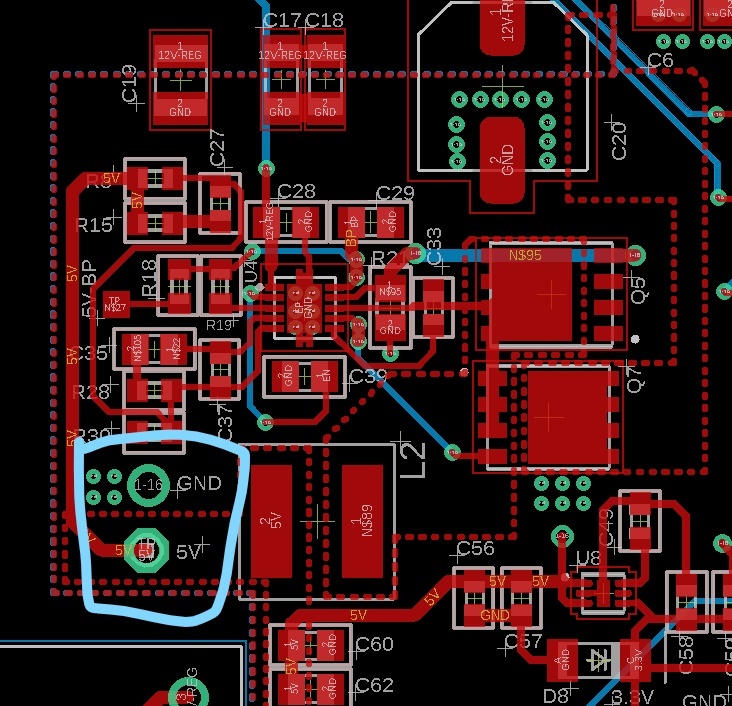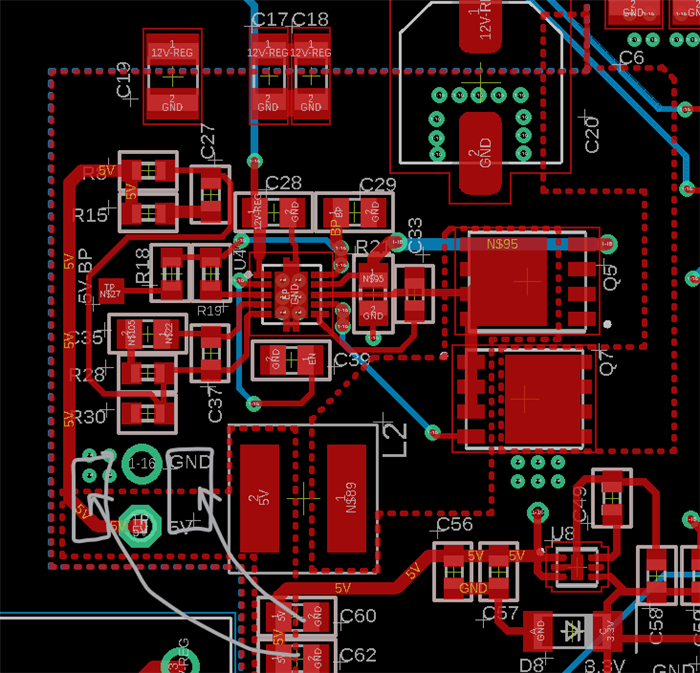Hi
I use the evm sample and design my own board, but I have issue with output voltage which does not stabilize after input transient voltage or current. you can see in below graph the voltage stay off until high current or transient voltage turn off. When you compare this with webbench simulation does not match. I am not sure what I am doing wrong.
Web Bench simulation
Below is my schematic and footprint
Please let me know if you have any quesitons.
Thank you



